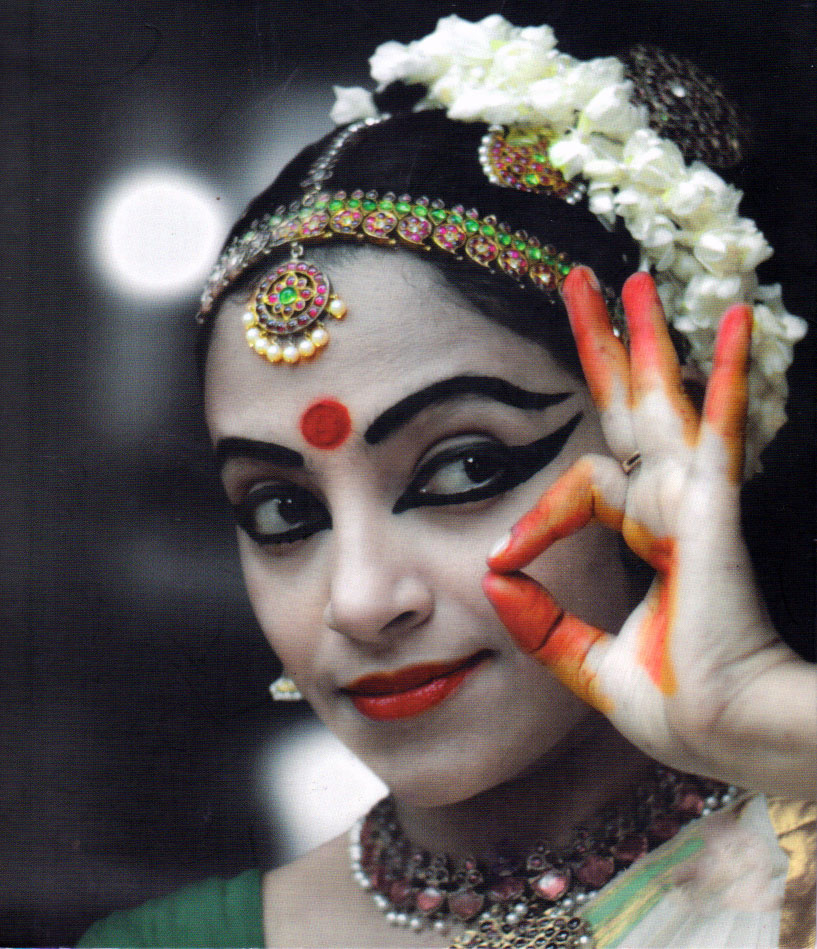Reviving Mookuthi in Mohiniyattam repertoire and exploring the cultural significance and choreographic resurgence.
The preceding articles elucidated my thoughts and ideas concerning my signature Desi choreographies of Poli, Kurathi, and Chandanam. The next choreographic work in my Desi repertoire is Mookuthi. Through my research, I realized that the choreographic concepts surrounding Mookuthi(nose pin) can have various perspectives. The most common and well-known is related to the story of Devi Kanyakumari, whose radiant nose pin, or Mookuthi, was often mistaken for a lighthouse and is known to have misguided ships. Devi’s nose pin is said to have the brightest shine amongst diamonds.
My research uncovered many other stories and perspectives, but I remained unconvinced about its philosophical connections that would inspire and reveal my inner aspirations and vision to choreograph Mookuthi. It was during one of these searches that I happened to meet a very enlightened spiritual teacher. My conversation with him elicited great interest, and he expressed enthusiasm to listen to the verses of the composition.
After listening and reading the lines of the composition, the enlightened teacher explained that a diamond is the most costly and valuable among all the gemstones in the world. He also suggested the similarity between the two words – Mookuthi, meaning nose pin, and Mukthi, meaning enlightenment.
Furthermore, he explained that the composition discusses a Jeevatma (herein represented by a young hill-tribe woman) who is focused on the single thought of finding her lost diamond nose pin – her most valuable possession. The teacher aligned that thought with ‘poorna ekagra chitham,’ which is one of the pathways to enlightenment and eternal bliss or moksha explained in Vedic literature. This line of thought resonated with my creative aspirations and guided me to choreograph Mookuthi.
Historical significance of Mookuthi
I remember reading somewhere that ‘a dancing girl is the essence of Indian philosophy.’ Putting all my understandings and research together helped me choreograph Mookuthi with the underpinnings of the essence of Indian philosophy, which is nothing but enlightenment.
Mookuthi was part of the Mohiniyattam repertoire until the 1930s, after which it was sidelined and eventually disappeared from mainstream Mohiniyattam performances due to it being deemed unacceptable to the then-existing social standards.
The dance begins with the danseuse explaining how much she is fond of her Mookuthi – her diamond nose pin. Unfortunately, she loses it and begins a single-focused search to find it. She looks everywhere, asks everyone, and searches between her clothes to find it. Through this focused search, however, she realizes that what she has been truly searching for is her own inner self and her understanding of the Parabrahmam.
Mookuthi is one among a few of my choreographies that have been researched, revived, and reimagined from among the ones that have been forgotten and lost from the Mohiniyattam repertoire from the early 1900s.
Photo Courtesy: Natanakairali Archives
Video Clipping: Sandra Pisharody

